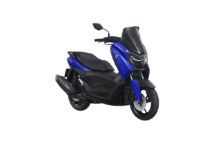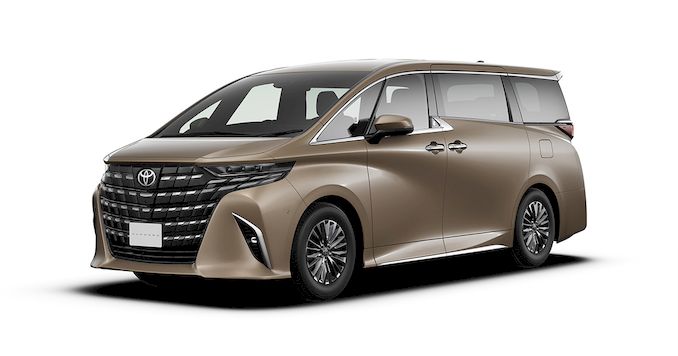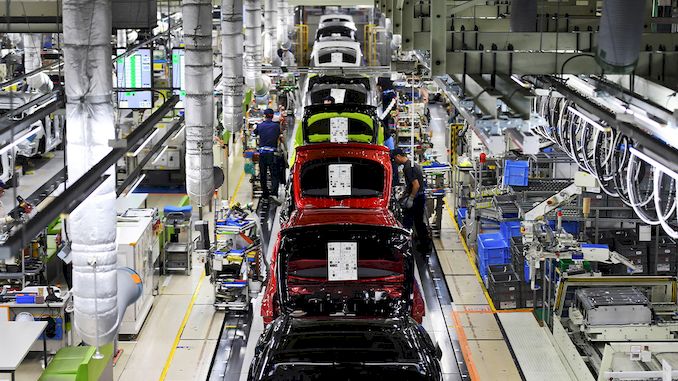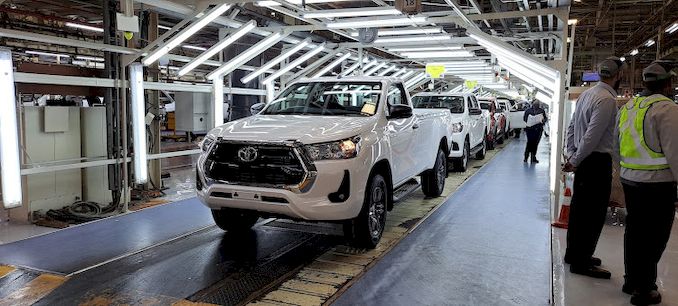Toyota Motor is in an unusual situation as it has had to reject orders for half of its car models at dealerships due to backlogged orders caused by supply constraints from the Covid-19 pandemic.
Nikkei Asia has collected information from several Toyota dealers in Japan regarding the sales situation of 20 models of the brand. The results show that starting from November, orders for the Alphard MPV model are no longer accepted. Toyota has also stopped taking orders for the Land Cruiser 300 model due to concerns about the ability to fulfill orders before the launch of a new model.
Pre-orders for the latest version of the Toyota Alphard, introduced in late June 2023, have been restricted since early July. Pre-orders for the upgraded Toyota Aqua model have also been suspended since September this year. Meanwhile, some models like the Toyota Harrier and Corolla Cross are not affected by order restrictions.
This action can be seen through Toyota’s sales figures in recent times. During the seven months from April to October 2023, sales at Toyota dealers nationwide only increased for two months compared to the same period last year. Toyota’s sales decline is most noticeable in August, especially compared to the same period last year when demand for Toyota cars was high due to the launch of the new generation Sienta model.
Most other automakers do not face similar issues as Toyota in meeting customer demand. There are three main factors leading to Toyota’s current situation.
Firstly, demand exceeds supply. Toyota raised its production forecast in Japan for Toyota and Lexus brand models in the fiscal year 2023 by an additional 90,000 units compared to the initial forecast to 3.34 million units, higher than the 3.3 million units they had anticipated for the previous year before the 2019 pandemic.
Domestic sales in October for Toyota increased by 18% compared to the same period to 133,996 vehicles, the 10th consecutive month of increase compared to the same period last year.
According to the Japan Automobile Dealers Association, Toyota’s market share in Japan from July to September increased nearly 10 points compared to the same period last year to over 50%.
The second factor may come from Toyota’s significant backlog of orders. In Toyota’s production process, cars are made to order to minimize inventory and waste. When the production process is limited due to chip shortages during the Covid outbreak, Toyota still accepts orders. At peak times, the backlog of orders can reach around 1 million vehicles.
Changes by Toyota to integrate sales channels in 2020 may also be a third reason. Toyota dealerships used to be divided into four types, with certain models only available at specific dealerships. But now, any Toyota model can be purchased at any dealership. This has led to “overwhelmingly high numbers of orders for certain popular models”; a dealership executive said, and the number of canceled orders is also increasing.
However, the situation is showing signs of improvement. The average delivery time has been reduced from about 6 months at the end of 2022 to less than 5 months at the current time. Some sources suggest that the delivery time will continue to be reduced to about 4 months in early 2024.
Currently, restrictions on new orders have been relaxed since mid-November 2023, and the situation is expected to return to normal after spring 2024. If Toyota does not make changes, customers may turn to other competing car brands.
TT (Tuoitrethudo)
References: Nikkei Asia













































